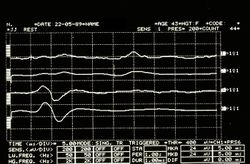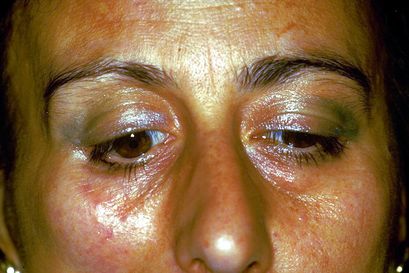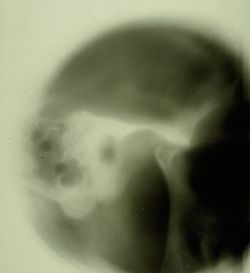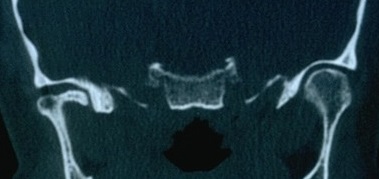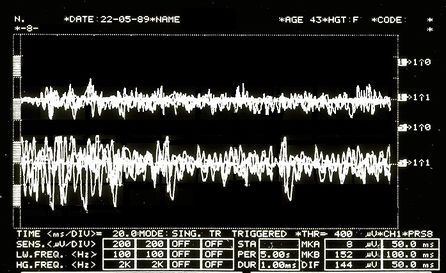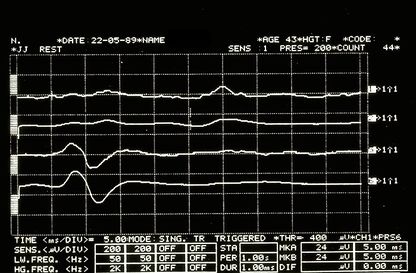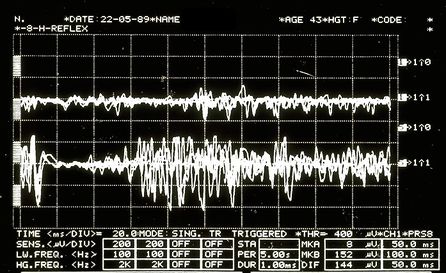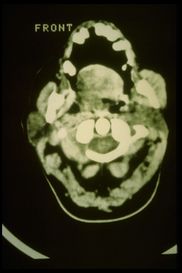Difference between revisions of "The logic of probabilistic language/fr"
(Created page with "Chiffre") |
(Created page with "Langage de logique floue") |
||
| (90 intermediate revisions by the same user not shown) | |||
| Line 194: | Line 194: | ||
File:Spasmo emimasticatorio ATM.jpg|'''Chiffre 2:''' Stratigraphie de l'ATM du patient montrant des signes d'aplatissement condylien et d'ostéophyte | File:Spasmo emimasticatorio ATM.jpg|'''Chiffre 2:''' Stratigraphie de l'ATM du patient montrant des signes d'aplatissement condylien et d'ostéophyte | ||
File:Atm1 sclerodermia.jpg|'''Chiffre 3:''' Tomodensitométrie de l'ATM | File:Atm1 sclerodermia.jpg|'''Chiffre 3:''' Tomodensitométrie de l'ATM | ||
| − | File:Spasmo emimasticatorio assiografia.jpg|'''Chiffre 4:''' | + | File:Spasmo emimasticatorio assiografia.jpg|'''Chiffre 4:''' Axiographie du patient montrant un aplatissement du motif de mastication sur le condyle droit |
| − | File:EMG2.jpg|''' | + | File:EMG2.jpg|'''chiffre 5:''' Schéma interférentiel EMG. Traces supérieures chevauchantes correspondant au masséter droit, inférieures au masséter gauche. |
</gallery> | </gallery> | ||
| − | <br /> | + | <br />Que ce soit alors <math>P(D)</math> la probabilité de trouver, dans l'échantillon de nos <math>n</math> personnes, des individus qui présentent les éléments appartenant à l'ensemble précité <math>D=\{\delta_1,\delta_2,...,\delta_n\}</math> |
| − | + | Afin de tirer parti des informations fournies par cet ensemble de données, le concept de partition de pertinence causale est introduit: | |
| − | ==== | + | ====La partition de la pertinence causale==== |
| − | : | + | :Soyez toujours <math>n</math> le nombre de personnes sur lesquelles nous devons effectuer les analyses, si nous divisons (en fonction de certaines conditions comme expliqué ci-dessous) ce groupe en <math>k</math> sous-ensembles <math>C_i</math> avec <math>i=1,2,\dots,k</math>, un cluster est créé qui s'appelle un "ensemble de partition" <math>\pi</math>: |
:<math>\pi = \{C_1, C_2,\dots,C_k \} \qquad \qquad \text{with} \qquad \qquad C_i \subset n , </math> | :<math>\pi = \{C_1, C_2,\dots,C_k \} \qquad \qquad \text{with} \qquad \qquad C_i \subset n , </math> | ||
| − | + | où avec le symbolisme <math>C_i \subset n </math> cela indique que la sous-classe <math>C_i</math> est contenue dans <math>n</math>. | |
| − | + | La partition <math>\pi</math>, pour qu'elle soit définie comme une partition de pertinence causale, doit avoir ces propriétés: | |
| − | # | + | #Pour chaque sous-classe <math>C_i</math> la condition doit s'appliquer <math>rc=P(D \mid C_i)- P(D )\neq 0, </math> c'est à dire la probabilité de trouver dans le sous-groupe <math>C_i</math> une personne qui présente les symptômes, signes cliniques et éléments appartenant à l'ensemble <math>D=\{\delta_1,\delta_2,...,\delta_n\}</math>. Une partition causalement pertinente de ce type est dite '''homogène'''. |
| − | # | + | #Chaque sous-ensemble <math>C_i</math> doit être « élémentaire », c'est-à-dire qu'il ne doit pas être divisé en d'autres sous-ensembles, car s'ils existaient, ils n'auraient aucune pertinence causale. |
| − | + | Supposons maintenant, par exemple, que l'échantillon de population <math>n</math>, auquel appartient notre bonne patiente Mary Poppins, soit une catégorie de sujets âgés de 20 à 70 ans. qui présentent les éléments appartenant à l'ensemble de données <math>D=\{\delta_1,.....\delta_n\}</math> qui correspondent aux tests de laboratoire mentionnés ci-dessus et précise dans '[[La logique de Langue]]'. | |
| − | + | Supposons que dans un échantillon de 10 000 sujets de 20 à 70 nous aurons une incidence de 30 sujets <math>p(D)=0.003</math> présentant des signes cliniques <math>\delta_1</math> and <math>\delta_4 | |
| − | </math>. | + | </math>. Nous avons préféré utiliser ces rapports pour la démonstration du processus probabiliste car dans la littérature, les données concernant les signes et symptômes cliniques des troubles temporo-mandibulaires ont une variation trop importante ainsi qu'une incidence trop élevée à notre avis..<ref name=":2">{{Cite book |
| autore = Pantoja LLQ | | autore = Pantoja LLQ | ||
| autore2 = De Toledo IP | | autore2 = De Toledo IP | ||
| Line 341: | Line 341: | ||
| − | + | Un exemple de partition avec probabilité présumée dans laquelle la dégénérescence de l'ATM (Deg.TMJ) se produit en conjonction avec des troubles temporomandibulaires (TMD) serait le suivant: | |
{| | {| | ||
|+ | |+ | ||
|<math>P(D| Deg.TMJ \cap TMDs)=0.95 \qquad \qquad \; </math> | |<math>P(D| Deg.TMJ \cap TMDs)=0.95 \qquad \qquad \; </math> | ||
| | | | ||
| − | | | + | |où |
| | | | ||
| | | | ||
| Line 353: | Line 353: | ||
|<math>P(D| Deg.TMJ \cap noTMDs)=0.3 \qquad \qquad \quad </math> | |<math>P(D| Deg.TMJ \cap noTMDs)=0.3 \qquad \qquad \quad </math> | ||
| | | | ||
| − | | | + | |où |
| | | | ||
| | | | ||
| Line 360: | Line 360: | ||
|<math>P(D| no Deg.TMJ \cap TMDs)=0.199 \qquad \qquad \; </math> | |<math>P(D| no Deg.TMJ \cap TMDs)=0.199 \qquad \qquad \; </math> | ||
| | | | ||
| − | | | + | |où |
| | | | ||
| | | | ||
| Line 367: | Line 367: | ||
|<math>P(D| noDeg.TMJ \cap noTMDs)=0.001 \qquad \qquad \;</math> | |<math>P(D| noDeg.TMJ \cap noTMDs)=0.001 \qquad \qquad \;</math> | ||
| | | | ||
| − | | | + | |où |
| | | | ||
| | | | ||
| Line 374: | Line 374: | ||
* | * | ||
| − | {{q2| | + | {{q2|Une partition homogène fournit ce que nous avons l'habitude d'appeler le diagnostic différentiel.|}} |
| − | ==== | + | ====Situations cliniques==== |
| − | + | Ces probabilités conditionnelles démontrent que chacune des quatre sous-classes de la partition est causalement pertinente pour les données patient <math>D=\{\delta_1,.....\delta_n\}</math> dans l'échantillon de population <math>PO</math>. Compte tenu de la partition précitée de la classe de référence, nous avons les situations cliniques suivantes: | |
| − | *Mary Poppins <math>\in</math> | + | *Mary Poppins <math>\in</math> de l'articulation temporo-mandibulaire <math>\cap</math> Troubles temporo-mandibulaires |
| − | *Mary Poppins <math>\in</math> | + | *Mary Poppins <math>\in</math> dégénérescence de l'articulation temporo-mandibulaire <math>\cap</math> pas de troubles temporo-mandibulaires |
| − | *Mary Poppins <math>\in</math> | + | *Mary Poppins <math>\in</math> pas de dégénérescence de l'articulation temporo-mandibulaire <math>\cap</math> Troubles temporo-mandibulaires |
| − | *Mary Poppins <math>\in</math> | + | *Mary Poppins <math>\in</math> pas de dégénérescence de l'articulation temporo-mandibulaire <math>\cap</math> pas de troubles temporo-mandibulaires |
| − | + | Pour arriver au diagnostic final ci-dessus, nous avons effectué une analyse probabiliste-causale de l'état de santé de Mary Poppins dont les données initiales étaient <math>D=\{\delta_1,.....\delta_n\}</math>. | |
| − | + | En général, on peut se référer à un processus logique dans lequel on examine les éléments suivants: | |
| − | * | + | *un individu: <math>a</math> |
| − | * | + | *son jeu de données initial <math>D=\{\delta_1,.....\delta_n\}</math> |
| − | * | + | *un échantillon de population <math>n</math> auquel il appartient, |
| − | * | + | *une probabilité de base <math>P(D)=0,003</math> |
| − | + | À ce stade, nous devrions introduire des arguments trop spécialisés qui détourneraient le lecteur du sujet mais qui ont une grande importance épistémique pour lesquels nous essaierons d'extraire le fil logique le plus décrit du concept Analysandum/Analysans. | |
| − | + | L'analyse probabiliste-causale de <math>D=\{\delta_1,.....\delta_n\}</math> est alors un couple des formes logiques suivantes (Analysandum / Analysans<ref>{{Cite book | |
| autore = Westmeyer H | | autore = Westmeyer H | ||
| titolo = The diagnostic process as a statistical-causal analysis | | titolo = The diagnostic process as a statistical-causal analysis | ||
| Line 417: | Line 417: | ||
}}</ref>): | }}</ref>): | ||
| − | *'''Analysandum''' <math> = \{P(D),a\}</math>: | + | *'''Analysandum''' <math> = \{P(D),a\}</math> : est une forme logique qui contient deux paramètres : ''probability'' <math>P(D)</math> pour sélectionner une personne qui présente les symptômes et éléments appartenant à l'ensemble <math>D=\{\delta_1,\delta_2,...,\delta_n\}</math>, et l'''individu générique'' <math>a</math> qui est sujet à ces symptômes.''' |
| − | *'''Analysan <math>= \{\pi,a,KB\}</math>''': | + | *'''Analysan <math>= \{\pi,a,KB\}</math>''' : est une forme logique qui contient trois paramètres : la ''partition'' <math>\pi</math>, le ' 'individu générique'' <math>a</math> appartenant à l'échantillon de population <math>n</math> et ''<math>KB</math> (Knowledge Base)'' qui comprend un ensemble de <math>n>1</math> énoncés de probabilité conditionnée.''' |
| − | + | Par exemple, on peut conclure que le diagnostic définitif est le suivant: | |
| − | <math>P(D| Deg.TMJ \cap TMDs)=0.95</math> - | + | <math>P(D| Deg.TMJ \cap TMDs)=0.95</math> - cela signifie que notre Mary Poppins est affectée à 95% par les TMD, puisqu'elle a une dégénérescence de l'articulation temporo-mandibulaire en plus des données positives <math>D=\{\delta_1,.....\delta_n\}</math> |
==Final considerations== | ==Final considerations== | ||
| − | + | Nous avons parcouru un chemin long et tortueux pour mieux comprendre la complexité rencontrée par le collègue aux prises avec la très lourde responsabilité éthique de poser un diagnostic. Cependant, cette tâche devient encore plus complexe lorsque nous devons être détaillés et prudents dans l'établissement d'un diagnostic différentiel.. | |
| − | + | Ici, nous entrons dans un sujet délicat, qui est lié au contenu épistémologique et qui a tout d'abord été rapporté dans la "[[Introduction]]". On parle de: | |
| − | *''' | + | *'''Interdisciplinarité''': <br>''Dans la politique scientifique, il est généralement reconnu que la résolution de problèmes basée sur la science nécessite une recherche interdisciplinaire ('''IDR'''), comme proposé par le projet de l'UE appelé Horizon 2020<ref>European Union, ''[https://ec.europa.eu/programmes/horizon2020/en/h2020-section/societal-challenges Horizon 2020]''</ref>. Dans une étude récente, les auteurs se concentrent sur la question de savoir pourquoi les chercheurs ont des difficultés cognitives et épistémiques dans la conduite de l'IDR. On pense que la perte d'intérêt philosophique pour l'épistémologie de la recherche interdisciplinaire est causée par un paradigme philosophique de la science appelé « paradigme physique de la science », qui empêche la reconnaissance d'importants changements IDR dans la philosophie des sciences et de la recherche..<br>Le paradigme philosophique alternatif proposé, appelé « Paradigme d'ingénierie de la science », fait des hypothèses philosophiques alternatives sur des aspects tels que le but de la science, le caractère de la connaissance, les critères épistémiques et pragmatiques pour l'acceptation de la connaissance et le rôle des outils technologiques. Par conséquent, les chercheurs scientifiques ont besoin d'échafaudages dits métacognitifs pour les aider dans l'analyse et la reconstruction de la façon dont la « connaissance » est construite dans différentes disciplines..<br>Dans la recherche interdisciplinaire, les échafaudages métacognitifs aident la communication interdisciplinaire à analyser et à articuler comment la discipline construit des connaissances<ref name=":0">{{cita libro |
| autore = Boon M | | autore = Boon M | ||
| autore2 = Van Baalen S | | autore2 = Van Baalen S | ||
| Line 459: | Line 459: | ||
}}</ref>'' | }}</ref>'' | ||
| − | + | Ce concept est lié au sujet discuté précédemment dans lequel le collègue doit être conscient de sa propre « incertitude subjective » (due à un langage logique classique « malade ou sain ») et de « l'incertitude objective » (due à un langage logique probabiliste ' probablement malade ou probablement en bonne santé'). Il n'est pas compliqué de prouver cette affirmation : l'incertitude dont nous parlons provient du fait que les éléments, affirmations, données, classes et sous-classes évoqués et qui construisent l'appareil de la logique du langage probabiliste: Analysandum <math> = \{P(D),a\}</math> et Analysan <math> = \{P(D),a\}</math> sont des éléments qui existent dans un monde spécifique, et dans ce cas dans un contexte dentaire dans lequel l'élément <math>KB</math> du processus indique indiscutablement une "connaissance de base" uniquement dans un contexte dentaire spécifique. | |
| − | + | Cette conclusion confirmée par le dentiste était la suivante: | |
<math>P(D| Deg.TMJ \cap TMDs)=0.95</math> | <math>P(D| Deg.TMJ \cap TMDs)=0.95</math> | ||
| − | + | ou mieux: c'est ma conviction à 95% que Mary Poppins est affectée par les TMD car elle a une dégénérescence de l'articulation temporo-mandibulaire en plus de la positivité des données <math>D=\{\delta_1,\dots\delta_n\}</math> | |
| − | + | Mais quelque chose d'étrange se produit parce que de nulle part, un chercheur, qui utilise des «échafaudages métacognitifs»<ref>{{Cite book | |
| autore = Boon M | | autore = Boon M | ||
| autore2 = Van Baalen S | | autore2 = Van Baalen S | ||
| Line 484: | Line 484: | ||
| LCCN = | | LCCN = | ||
| OCLC = | | OCLC = | ||
| − | }}</ref> | + | }}</ref> pour une mise en œuvre dans l'analyse et la reconstruction de la façon dont la « connaissance » est construite dans différentes disciplines, exige une réponse à la question suivante du dentiste: |
| − | {{q4|... | + | {{q4|...existe-t-il un autre monde ou contexte, parallèle au vôtre, dans lequel, en plus des données D, il existe d'autres données qui vous sont inconnues ?|}} |
| − | + | et augmenter la dose: soumettre Mary Poppins aux tests électrophysiologiques du trijumeau suivants, les étiqueter comme nous l'avons fait précédemment pour l'ensemble de données <math>D=\{\delta_1,\dots\delta_n\}</math> générant un autre ensemble contenant un nombre <math>m</math> de données inconnues (n'appartenant pas à la branche purement dentaire) <math>C=\{\gamma_1,\dots\gamma_m\}</math> créant ainsi un tout nouvel ensemble que nous appellerons <math>C=\{\gamma_1,\dots\gamma_m\}</math> (appelé <math>S_{unknown}</math> précisément en raison de la présence de données inconnues du contexte dentaire). | |
| − | <math>\delta_1=</math> | + | <math>\delta_1=</math> Rapport radiologique positif de l'ATM sur la figure 2 |
| − | <math>\delta_2=</math> | + | <math>\delta_2=</math> Rapport CT positif de l'ATM sur la figure 3 |
| − | <math>\delta_3=</math> | + | <math>\delta_3=</math> Rapport axiographique positif des traces condyliennes sur la figure 4 |
| − | <math>\delta_4=</math> | + | <math>\delta_4=</math> Modèle d'interférence EMG asymétrique dans la figure 5 |
| − | <math>{\gamma _{1}}=</math> Jaw jerk | + | <math>{\gamma _{1}}=</math> Jaw jerk dans la figure 6 |
| − | <math>{\displaystyle \gamma _{2}}=</math> | + | <math>{\displaystyle \gamma _{2}}=</math> Période de silence mécanique dans la figure 7 |
| − | <math>{\displaystyle \gamma _{3}}=</math> CT | + | <math>{\displaystyle \gamma _{3}}=</math> CT muscle masséter droit sur la figure 8 |
<center> | <center> | ||
| − | === | + | ===Troisième approche clinique=== |
| − | ''( | + | ''(survolez les images)'' |
</center> | </center> | ||
<br /><gallery mode="packed-hover" widths="250" heights="182" perrow="3"> | <br /><gallery mode="packed-hover" widths="250" heights="182" perrow="3"> | ||
| − | File:Spasmo emimasticatorio.jpg|''' | + | File:Spasmo emimasticatorio.jpg|'''Chiffre 1:''' Patient déclarant " Douleur bucco-faciale dans l'hémilatéral droit |
| − | File:Spasmo emimasticatorio ATM.jpg|''' | + | File:Spasmo emimasticatorio ATM.jpg|'''Chiffre 2:''' Stratigraphie de l'ATM du patient montrant des signes d'aplatissement condylien et d'ostéophyte |
| − | File:Atm1 sclerodermia.jpg|''' | + | File:Atm1 sclerodermia.jpg|'''Chiffre 3:''' Tomodensitométrie de l'ATM |
| − | File:Spasmo emimasticatorio assiografia.jpg|''' | + | File:Spasmo emimasticatorio assiografia.jpg|'''Chiffre 4:''' Axiographie du patient montrant un aplatissement du motif de mastication sur le condyle droit |
| − | File:EMG2.jpg|''' | + | File:EMG2.jpg|'''Chiffre 5:''' Schéma interférentiel EMG. Traces supérieures chevauchantes correspondant au masséter droit, inférieures au masséter gauche. |
| − | File:Spasmo emimasticatorio JJ.jpg|''' | + | File:Spasmo emimasticatorio JJ.jpg|'''Chiffre 6:''' Secousse de la mâchoire détectée électrophysiologiquement sur les masséters droit (traces supérieures) et gauche (traces inférieures) |
| − | File:Spasmo emimasticatorio SP.jpg|''' | + | File:Spasmo emimasticatorio SP.jpg|'''Chiffre 7:''' Période de silence mécanique détectée électrophysiologiquement sur les masséters droit (traces supérieures chevauchantes) et gauche (traces inférieures chevauchantes) |
| − | File:Spasmo emimasticatorio TC.jpg|''' | + | File:Spasmo emimasticatorio TC.jpg|'''Chiffre 8:''' TDM axial du massif facial dans lequel il existe une hypertrophie marquée du masséter droit |
</gallery> | </gallery> | ||
| − | + | De cette façon, il a été démontré que, inévitablement, | |
| − | {{q2| | + | {{q2|la logique du langage médical est plus ou moins basée sur des données qui dérivent d'un monde ou d'un contexte spécifique ou plutôt, d'un contexte spécialisé dans lequel le périmètre qui délimite cette connaissance ne nous permet pas de nous projeter dans des contextes parallèles}} |
| − | + | En explorant cette ligne de périmètre du contexte spécialisé, nous créerons une zone proche de celle-ci que nous appellerons la « zone floue » ou « logique floue » dont nous parlerons dans le chapitre suivant. | |
| − | {{q4|... | + | {{q4|... à partir de ce qu'il ne semble pas, même avec une logique de langage probabiliste, nous pourrons définir un diagnostic exact.|en fait, pour cette raison, nous devrions également considérer [[Fuzzy logic language|Fuzzy Logic Language]] }} |
| − | {{Btnav|The logic of classical language| | + | {{Btnav|The logic of classical language|Langage de logique floue}} |
{{bib}} | {{bib}} | ||
Latest revision as of 17:08, 30 October 2021
Dans ce chapitre, nous aborderons la logique du langage couplée aux probabilités mathématiques. Nous avons vu que logique classique à elle seule ne suffit pas à déterminer des diagnostics précis; par conséquent, un aperçu conceptuel et formel est donné sur les raisons pour lesquelles la probabilité peut être très utile. En fournissant des illustrations d'exemples de cas cliniques, nous verrons comment la logique du langage probabiliste est capable de nous fournir un diagnostic différentiel de manière « assez bonne »..
La conclusion est qu'il est possible de démontrer que, même avec l'ajout du seul raisonnement probabiliste, il n'est pas possible de déterminer des diagnostics exacts, donc d'autres enrichissements sont recherchés pour notre langage.
Logique probabiliste du langage en médecine
Chaque idée scientifique (que ce soit en médecine, en architecture, en ingénierie, en chimie ou dans tout autre domaine), lorsqu'elle est mise en pratique, est sujette à de petites erreurs et incertitudes. Les mathématiques - à travers la théorie des probabilités et l'inférence statistique - aident à contrôler avec précision et ainsi contenir ces incertitudes. Il faut toujours considérer que dans tous les cas pratiques "les résultats dépendent également de nombreux autres facteurs externes à la théorie", qu'il s'agisse de conditions initiales et environnementales, d'erreurs expérimentales ou d'autre chose..
Toutes les incertitudes sur ces facteurs font de la relation théorie-observation une relation probabiliste. Dans l'approche médicale, il existe deux types d'incertitudes qui pèsent le plus sur les diagnostics : l'incertitude subjective et la fatalité..[1][2]
Il devient donc essentiel dans ce scénario de distinguer ces deux incertitudes et de montrer que la notion de probabilité a des sens différents dans ces deux contextes.
Nous tenterons d'exposer ces concepts en reliant chaque étape cruciale à l'approche clinique qui a été rapportée dans les chapitres précédents et en particulier l'approche dans le contexte dentaire et neurologique en luttant pour la primauté du diagnostic pour notre chère Mary Poppins.
Incertitude subjective et pertes
Imaginons de demander à Mary Poppins lequel des deux collègues médecins – le dentiste ou le neurologue – a raison.
La question créerait une sorte d'agitation fondée sur l'incertitude intérieure ; par conséquent, les notions de certitude et d'incertitude se réfèrent à des états épistémiques subjectifs des êtres humains et non à des états du monde extérieur, car il n'y a ni certitude ni incertitude dans ce monde. En ce sens, comme nous l'avons mentionné, il existe un monde intérieur et un monde extérieur à nous-mêmes qui, tous deux, ne répondent pas aux canons de l'incertitude, mais de la probabilité.
Mary Poppins peut être subjectivement certaine ou incertaine quant à savoir si elle souffre de TTM ou d'une forme neuropathique ou neuromusculaire d'OP : ceci parce que « l'incertitude » est un état épistémique subjectif en dessous du seuil de la connaissance et de la croyance ; d'où le terme.
Incertitude subjective
Sans aucun doute, le terme « subjectif » effraie beaucoup, en particulier ceux qui ont l'intention de pratiquer la science en poursuivant l'idéal sain d'« objectivité », tel que ce terme est perçu par le bon sens. Il convient donc d'apporter quelques précisions sur l'utilisation de ce terme dans ce contexte:
- ‘Subjectif’ indique que l'évaluation de la probabilité dépend du statut d'information de la personne qui l'effectue.
- ‘Subjectif’ ne veut pas dire arbitraire.
La soi-disant « objectivité », telle que perçue par les personnes extérieures à la recherche scientifique, est définie lorsqu'une communauté d'êtres rationnels partage le même état d'information. Mais même dans ce cas, il faudrait plutôt parler d'« intersubjectivité » (c'est-à-dire le partage, par un groupe, d'opinions subjectives)
Dans les cas cliniques — précisément parce que les patients possèdent rarement des notions avancées de médecine — l'incertitude subjective doit être prise en compte. Vivre dans l'incertitude nous oblige à utiliser une approche probabiliste.
Accidentée
L'accident indique l'absence d'un certain lien entre la cause et l'effet. L'incertitude d'une union étroite entre la source et le phénomène est l'un des problèmes les plus défavorables dans la détermination d'un diagnostic.
Dans un cas clinique un phénomène (comme par exemple une malocclusion, une occlusion croisée, une béance, etc...) est aléatoirement associé à un autre phénomène (comme la dégénérescence osseuse de l'ATM); quand il y a des exceptions pour lesquelles la proposition logique ce n'est pas toujours vrai (mais c'est la plupart du temps), on dira que la relation n'est pas toujours vrai mais c'est probable.
Probabilité subjective et objective
Dans ce chapitre, quelques sujets déjà traités dans le livre fantastique de Kazem Sadegh-Zadeh[3], qui aborde le problème de la logique du langage médical, sont repris et nous reformulons leur contenu en les renvoyant à notre cas clinique de Mary Poppins, pour garder notre compréhension au plus près des contextes dentaires.
Des événements aléatoires et subjectivement incertains sont dits probables ; par conséquent, les accidents et l'incertitude sont traités comme des probabilités qualitatives, comparatives ou quantitatives.
Pour clarifier ce concept, reprenons l'exemple de Mary Poppins. Un médecin, ayant entendu ses symptômes pourra dire que :
- Mary Poppins souffre probablement de TMD (terme qualitatif).
- Mary Poppins est plus susceptible d'avoir des TMD que l'OP neuropathique (terme comparatif: nombre de cas diagnostiqués de TMD par rapport à nOP.
- La probabilité que Mary Poppins ait des TMD est de 0,15 (terme quantitatif, relatif à la population).
Probabilité subjective
Dans un contexte d'incertitude subjective humaine, les données probabilistes, qualitatives, comparatives et/ou quantitatives peuvent être interprétées comme une mesure d'incertitude subjective par le clinicien, afin de rendre les « états de conviction » numériquement représentables.
Par exemple, dire que « la probabilité que Mary Poppins soit affectée par les TMD est de 0,15 des cas » revient à dire « dans la mesure de 15 %, je pense que Mary Poppins est affectée par les TMD » ; ce qui signifie que le degré de conviction est le degré de probabilité subjective.
Probabilité objective
D'autre part, les événements et les processus aléatoires ne peuvent pas être décrits par des processus déterministes sous la forme « si A alors B ». Les statistiques sont utilisées pour quantifier la fréquence d'association entre A et B et pour représenter les relations entre eux comme un degré de probabilité qui introduit le degré de probabilité objective.
Dans le sillage de la probabilité croissante de l'incertitude et de l'aléatoire en médecine depuis le XVIIIe siècle, le terme « probabilité » est devenu un élément respecté du langage médical, de la méthodologie et de l'épistémologie.
Malheureusement, les deux types de probabilité, la probabilité subjective et la probabilité objective, ne sont pas différenciées avec précision en médecine, et il en va de même dans d'autres disciplines. Le fait fondamental reste que le sens le plus important que la théorie des probabilités a généré en médecine, en particulier dans les concepts de probabilité en étiologie, épidémiologie, diagnostic et thérapie, est sa contribution à notre compréhension et représentation de l'accident biologique.
Analyse probabiliste-causale
De ces prémisses, il est clair que le diagnostic clinique est fait en utilisant la méthode dite hypothétique-déductive appelée DN[4] (deductive-nomological model[5]). Mais ce n'est pas réaliste, car les connaissances médicales utilisées dans la prise de décision clinique contiennent à peine des lois déterministes causales pour permettre des explications causales et, par conséquent, pour formuler des diagnostics cliniques, entre autres dans le contexte spécialisé. Essayons d'analyser à nouveau le cas de notre Mary Poppins, en essayant cette fois une approche probabiliste-causale.
Considérons un certain nombre d'individus, y compris les personnes qui signalent une douleur bucco-faciale qui ont généralement une dégénérescence osseuse de l'articulation temporo-mandibulaire. Cependant, il peut également y avoir d'autres causes apparemment sans rapport. Nous devons traduire mathématiquement la « pertinence » que ces incertitudes causales ont pour déterminer un diagnostic.
La pertinence occasionnelle
Pour ce faire nous considérons le degré de pertinence causale d'un événement par rapport à un événement où :
- = patients atteints de dégénérescence osseuse de l'articulation temporo-mandibulaire.
- = patients signalant une douleur orofaciale.
- = patients sans dégénérescence osseuse de l'articulation temporo-mandibulaire.
Nous utiliserons la probabilité conditionnelle , c'est-à-dire la probabilité que l'événement ne se produise qu'après que l'événement ait déjà eu lieu.
Avec ces prémisses, la pertinence causale de l'échantillon de patients est :
où
- indique la probabilité que certaines personnes (parmi les pris en considération) souffrent de douleur oro-faciale causée par une dégénérescence osseuse de l'articulation temporo-mandibulaire,
tandis que
- indique la probabilité que d'autres personnes (toujours parmi les pris en considération) souffrent de douleur orofaciale conditionnée par autre chose que la dégénérescence osseuse de l'articulation temporo-mandibulaire.
Puisque toute probabilité suggère que est une valeur comprise entre et , le paramètre sera un nombre compris entre et .
Les significations que l'on peut donner à ce nombre sont les suivantes :
- nous avons les cas extrêmes (qui en réalité ne se produisent jamais) qui sont :
- indiquant que la seule cause de douleur orofaciale est la dégénérescence osseuse de l'ATM,
- ce qui indique que la cause de la douleur orofaciale n'est jamais la dégénérescence osseuse de l'ATM mais est autre chose,
- indiquant que la probabilité que la douleur orofaciale soit causée par une dégénérescence osseuse de l'ATM ou autrement est exactement la même,
- et les cas intermédiaires (qui sont les réalistes)
- indiquant que la cause de la douleur bucco-faciale est plus susceptible d'être une dégénérescence osseuse de l'ATM,
- ce qui indique que la cause de la douleur orofaciale n'est probablement pas une dégénérescence osseuse de l'ATM.
Deuxième approche clinique
(survolez les images)
Que ce soit alors la probabilité de trouver, dans l'échantillon de nos personnes, des individus qui présentent les éléments appartenant à l'ensemble précité
Afin de tirer parti des informations fournies par cet ensemble de données, le concept de partition de pertinence causale est introduit:
La partition de la pertinence causale
- Soyez toujours le nombre de personnes sur lesquelles nous devons effectuer les analyses, si nous divisons (en fonction de certaines conditions comme expliqué ci-dessous) ce groupe en sous-ensembles avec , un cluster est créé qui s'appelle un "ensemble de partition" :
où avec le symbolisme cela indique que la sous-classe est contenue dans .
La partition , pour qu'elle soit définie comme une partition de pertinence causale, doit avoir ces propriétés:
- Pour chaque sous-classe la condition doit s'appliquer c'est à dire la probabilité de trouver dans le sous-groupe une personne qui présente les symptômes, signes cliniques et éléments appartenant à l'ensemble . Une partition causalement pertinente de ce type est dite homogène.
- Chaque sous-ensemble doit être « élémentaire », c'est-à-dire qu'il ne doit pas être divisé en d'autres sous-ensembles, car s'ils existaient, ils n'auraient aucune pertinence causale.
Supposons maintenant, par exemple, que l'échantillon de population , auquel appartient notre bonne patiente Mary Poppins, soit une catégorie de sujets âgés de 20 à 70 ans. qui présentent les éléments appartenant à l'ensemble de données qui correspondent aux tests de laboratoire mentionnés ci-dessus et précise dans 'La logique de Langue'.
Supposons que dans un échantillon de 10 000 sujets de 20 à 70 nous aurons une incidence de 30 sujets présentant des signes cliniques and . Nous avons préféré utiliser ces rapports pour la démonstration du processus probabiliste car dans la littérature, les données concernant les signes et symptômes cliniques des troubles temporo-mandibulaires ont une variation trop importante ainsi qu'une incidence trop élevée à notre avis..[6][7][8][9][10][11]
Un exemple de partition avec probabilité présumée dans laquelle la dégénérescence de l'ATM (Deg.TMJ) se produit en conjonction avec des troubles temporomandibulaires (TMD) serait le suivant:
| où | |||||
| où | |||||
| où | |||||
| où |
Situations cliniques
Ces probabilités conditionnelles démontrent que chacune des quatre sous-classes de la partition est causalement pertinente pour les données patient dans l'échantillon de population . Compte tenu de la partition précitée de la classe de référence, nous avons les situations cliniques suivantes:
- Mary Poppins de l'articulation temporo-mandibulaire Troubles temporo-mandibulaires
- Mary Poppins dégénérescence de l'articulation temporo-mandibulaire pas de troubles temporo-mandibulaires
- Mary Poppins pas de dégénérescence de l'articulation temporo-mandibulaire Troubles temporo-mandibulaires
- Mary Poppins pas de dégénérescence de l'articulation temporo-mandibulaire pas de troubles temporo-mandibulaires
Pour arriver au diagnostic final ci-dessus, nous avons effectué une analyse probabiliste-causale de l'état de santé de Mary Poppins dont les données initiales étaient .
En général, on peut se référer à un processus logique dans lequel on examine les éléments suivants:
- un individu:
- son jeu de données initial
- un échantillon de population auquel il appartient,
- une probabilité de base
À ce stade, nous devrions introduire des arguments trop spécialisés qui détourneraient le lecteur du sujet mais qui ont une grande importance épistémique pour lesquels nous essaierons d'extraire le fil logique le plus décrit du concept Analysandum/Analysans.
L'analyse probabiliste-causale de est alors un couple des formes logiques suivantes (Analysandum / Analysans[12]):
- Analysandum : est une forme logique qui contient deux paramètres : probability pour sélectionner une personne qui présente les symptômes et éléments appartenant à l'ensemble , et lindividu générique qui est sujet à ces symptômes.
- 'Analysan : est une forme logique qui contient trois paramètres : la partition , le ' 'individu générique appartenant à l'échantillon de population et (Knowledge Base) qui comprend un ensemble de énoncés de probabilité conditionnée.
Par exemple, on peut conclure que le diagnostic définitif est le suivant:
- cela signifie que notre Mary Poppins est affectée à 95% par les TMD, puisqu'elle a une dégénérescence de l'articulation temporo-mandibulaire en plus des données positives
Final considerations
Nous avons parcouru un chemin long et tortueux pour mieux comprendre la complexité rencontrée par le collègue aux prises avec la très lourde responsabilité éthique de poser un diagnostic. Cependant, cette tâche devient encore plus complexe lorsque nous devons être détaillés et prudents dans l'établissement d'un diagnostic différentiel..
Ici, nous entrons dans un sujet délicat, qui est lié au contenu épistémologique et qui a tout d'abord été rapporté dans la "Introduction". On parle de:
- Interdisciplinarité:
Dans la politique scientifique, il est généralement reconnu que la résolution de problèmes basée sur la science nécessite une recherche interdisciplinaire (IDR), comme proposé par le projet de l'UE appelé Horizon 2020[13]. Dans une étude récente, les auteurs se concentrent sur la question de savoir pourquoi les chercheurs ont des difficultés cognitives et épistémiques dans la conduite de l'IDR. On pense que la perte d'intérêt philosophique pour l'épistémologie de la recherche interdisciplinaire est causée par un paradigme philosophique de la science appelé « paradigme physique de la science », qui empêche la reconnaissance d'importants changements IDR dans la philosophie des sciences et de la recherche..
Le paradigme philosophique alternatif proposé, appelé « Paradigme d'ingénierie de la science », fait des hypothèses philosophiques alternatives sur des aspects tels que le but de la science, le caractère de la connaissance, les critères épistémiques et pragmatiques pour l'acceptation de la connaissance et le rôle des outils technologiques. Par conséquent, les chercheurs scientifiques ont besoin d'échafaudages dits métacognitifs pour les aider dans l'analyse et la reconstruction de la façon dont la « connaissance » est construite dans différentes disciplines..
Dans la recherche interdisciplinaire, les échafaudages métacognitifs aident la communication interdisciplinaire à analyser et à articuler comment la discipline construit des connaissances[14][15]
Ce concept est lié au sujet discuté précédemment dans lequel le collègue doit être conscient de sa propre « incertitude subjective » (due à un langage logique classique « malade ou sain ») et de « l'incertitude objective » (due à un langage logique probabiliste ' probablement malade ou probablement en bonne santé'). Il n'est pas compliqué de prouver cette affirmation : l'incertitude dont nous parlons provient du fait que les éléments, affirmations, données, classes et sous-classes évoqués et qui construisent l'appareil de la logique du langage probabiliste: Analysandum et Analysan sont des éléments qui existent dans un monde spécifique, et dans ce cas dans un contexte dentaire dans lequel l'élément du processus indique indiscutablement une "connaissance de base" uniquement dans un contexte dentaire spécifique.
Cette conclusion confirmée par le dentiste était la suivante:
ou mieux: c'est ma conviction à 95% que Mary Poppins est affectée par les TMD car elle a une dégénérescence de l'articulation temporo-mandibulaire en plus de la positivité des données
Mais quelque chose d'étrange se produit parce que de nulle part, un chercheur, qui utilise des «échafaudages métacognitifs»[16] pour une mise en œuvre dans l'analyse et la reconstruction de la façon dont la « connaissance » est construite dans différentes disciplines, exige une réponse à la question suivante du dentiste:
et augmenter la dose: soumettre Mary Poppins aux tests électrophysiologiques du trijumeau suivants, les étiqueter comme nous l'avons fait précédemment pour l'ensemble de données générant un autre ensemble contenant un nombre de données inconnues (n'appartenant pas à la branche purement dentaire) créant ainsi un tout nouvel ensemble que nous appellerons (appelé précisément en raison de la présence de données inconnues du contexte dentaire).
Rapport radiologique positif de l'ATM sur la figure 2
Rapport CT positif de l'ATM sur la figure 3
Rapport axiographique positif des traces condyliennes sur la figure 4
Modèle d'interférence EMG asymétrique dans la figure 5
Jaw jerk dans la figure 6
Période de silence mécanique dans la figure 7
CT muscle masséter droit sur la figure 8
Troisième approche clinique
(survolez les images)
De cette façon, il a été démontré que, inévitablement,
En explorant cette ligne de périmètre du contexte spécialisé, nous créerons une zone proche de celle-ci que nous appellerons la « zone floue » ou « logique floue » dont nous parlerons dans le chapitre suivant.
(en fait, pour cette raison, nous devrions également considérer Fuzzy Logic Language)
- ↑ Vázquez-Delgado E, Cascos-Romero J, Gay-Escoda C, «Myofascial pain associated to trigger points: a literature review. Part 2: differential diagnosis and treatment», in Med Oral Patol Oral Cir Bucal, 2007.
PMID:20173729
DOI:10.4317/medoral.15.e639 - ↑ Thoppay J, Desai B, «Oral burning: local and systemic connection for a patient-centric approach», in EPMA J, 2019.
PMID:30984309 - PMCID:PMC6459460
DOI:10.1007/s13167-018-0157-3 - ↑ Sadegh-Zadeh Kazem, «Handbook of Analytic Philosophy of Medicine», Springer, 2012, Dordrecht.
ISBN: 978-94-007-2259-0
DOI:10.1007/978-94-007-2260-6 . - ↑ Sarkar S, «Nagel on Reduction», in Stud Hist Philos Sci, 2015.
PMID:26386529
DOI:10.1016/j.shpsa.2015.05.006 - ↑ Modèle DN d'explication scientifique, aussi connu sous le nom Le modèle de Hempel, Hempel–Oppenheim model, Popper–Hempel model, ou modèle de loi couvrant
- ↑ Pantoja LLQ, De Toledo IP, Pupo YM, Porporatti AL, De Luca Canto G, Zwir LF, Guerra ENS, «Prevalence of degenerative joint disease of the temporomandibular joint: a systematic review», in Clin Oral Investig, 2019.
PMID:30311063
DOI:10.1007/s00784-018-2664-y - ↑ De Toledo IP, Stefani FM, Porporatti AL, Mezzomo LA, Peres MA, Flores-Mir C, De Luca Canto G, «Prevalence of otologic signs and symptoms in adult patients with temporomandibular disorders: a systematic review and meta-analysis», in Clin Oral Investig, 2017.
PMID:27511214
DOI:10.1007/s00784-016-1926-9 - ↑ Bonotto D, Penteado CA, Namba EL, Cunali PA, Rached RN, Azevedo-Alanis LR, «Prevalence of temporomandibular disorders in rugby players», in Gen Dent.
PMID:31355769 - ↑ da Silva CG, Pachêco-Pereira C, Porporatti AL, Savi MG, Peres MA, Flores-Mir C, De Luca Canto G, «Prevalence of clinical signs of intra-articular temporomandibular disorders in children and adolescents: A systematic review and meta-analysis», in Am Dent Assoc, 2016. - PMCID:26552334
DOI:10.1016/j.adaj.2015.07.017 - ↑ Gauer RL, Semidey MJ, «Diagnosis and treatment of temporomandibular disorders», in Am Fam Physician, 2015.
PMID:25822556 - ↑ Kohlmann T, «Epidemiology of orofacial pain», in Schmerz, 2002.
PMID:12235497
DOI:10.1007/s004820200000 - ↑ Westmeyer H, «The diagnostic process as a statistical-causal analysis», in APA, 1975.
DOI:10.1007/BF00139821
This is an Open Access resource - ↑ European Union, Horizon 2020
- ↑ Boon M, Van Baalen S, «Epistemology for interdisciplinary research - shifting philosophical paradigms of science», in Eur J Philos Sci, 2019.
DOI:10.1007/s13194-018-0242-4 9(1):16. - ↑ Boon M, «An engineering paradigm in the biomedical sciences: Knowledge as epistemic tool», in Prog Biophys Mol Biol, 2017.
DOI:10.1016/j.pbiomolbio.2017.04.001 - ↑ Boon M, Van Baalen S, «Epistemology for interdisciplinary research - shifting philosophical paradigms of science», in Eur J Philos Sci, 2019.
PMID:30873248 - PMCID:PMC6383598
DOI:10.1007/s13194-018-0242-4
This is an Open Access resource
particularly focusing on the field of the neurophysiology of the masticatory system
